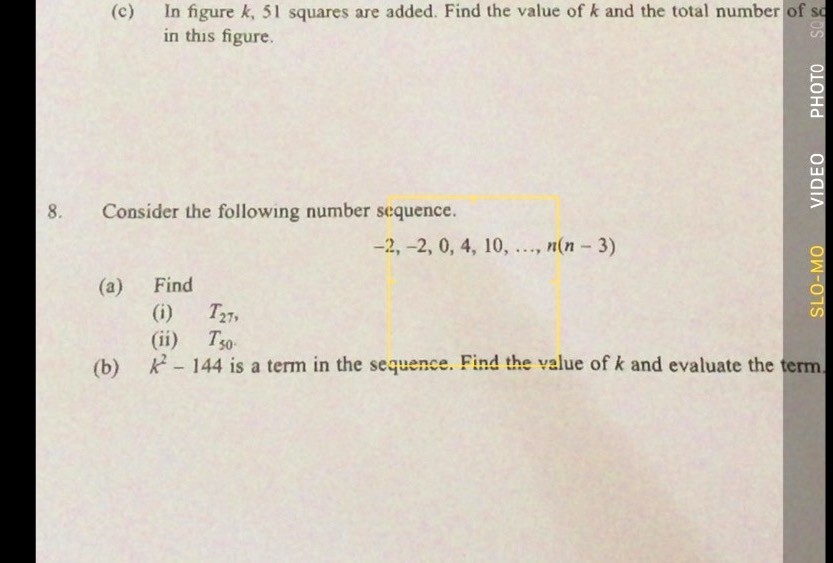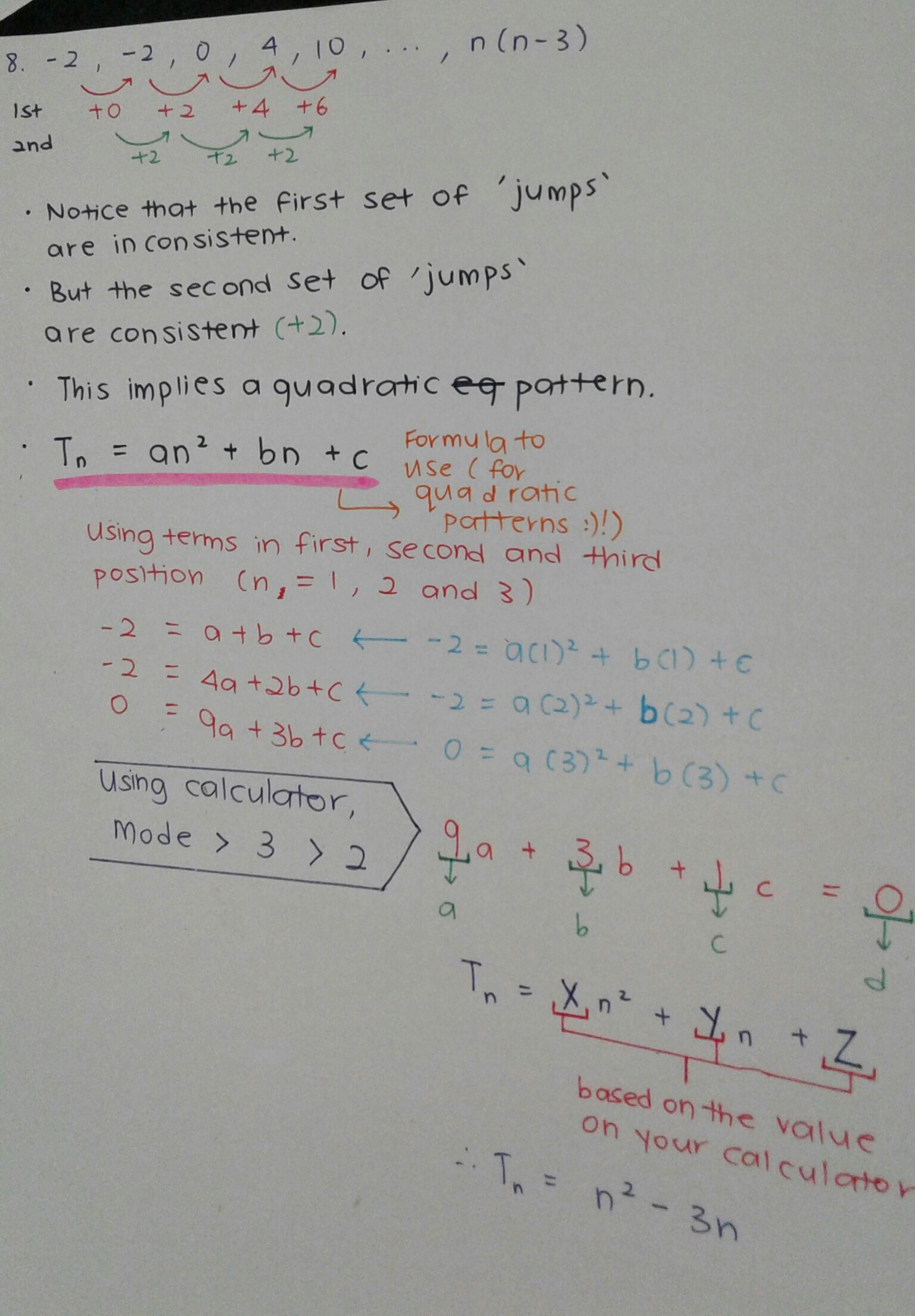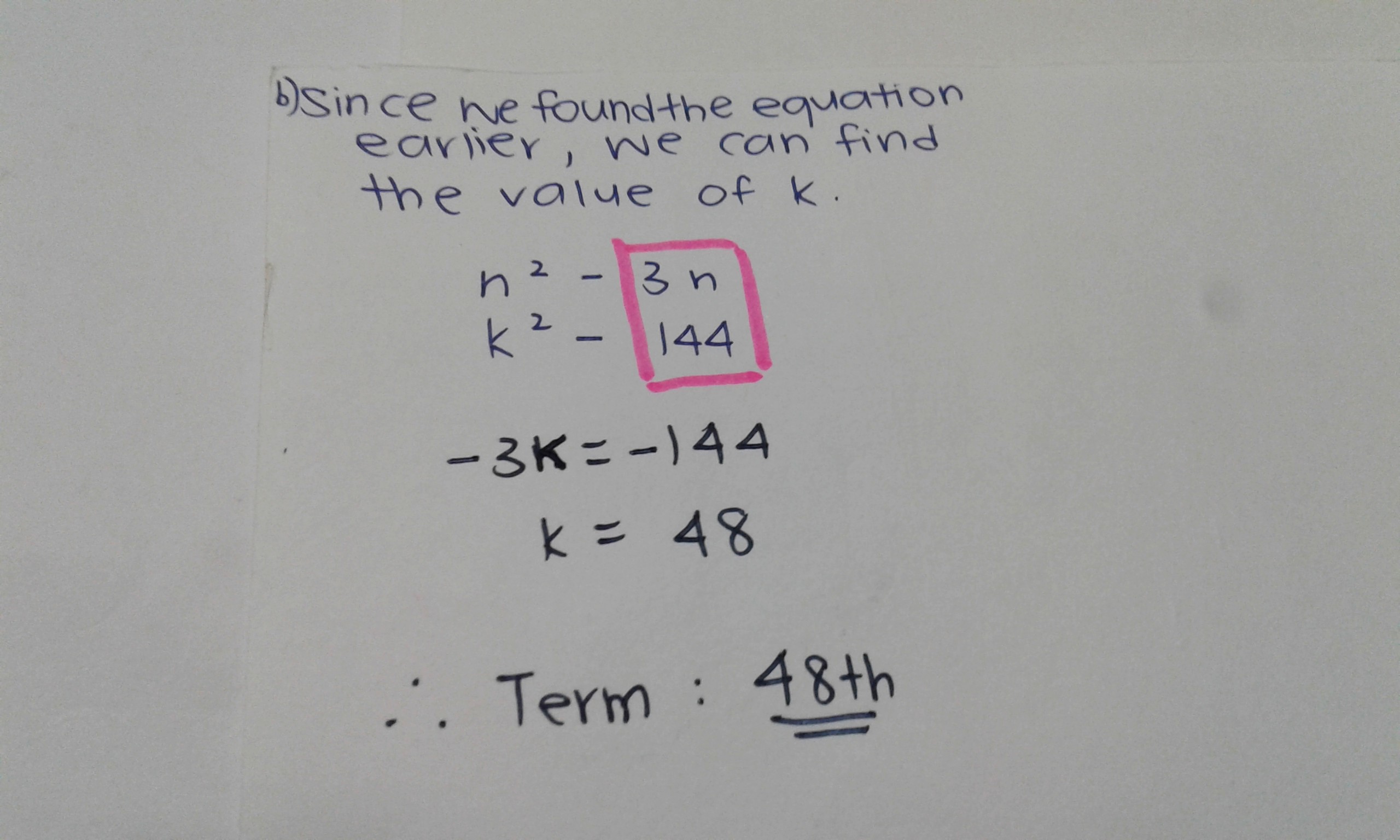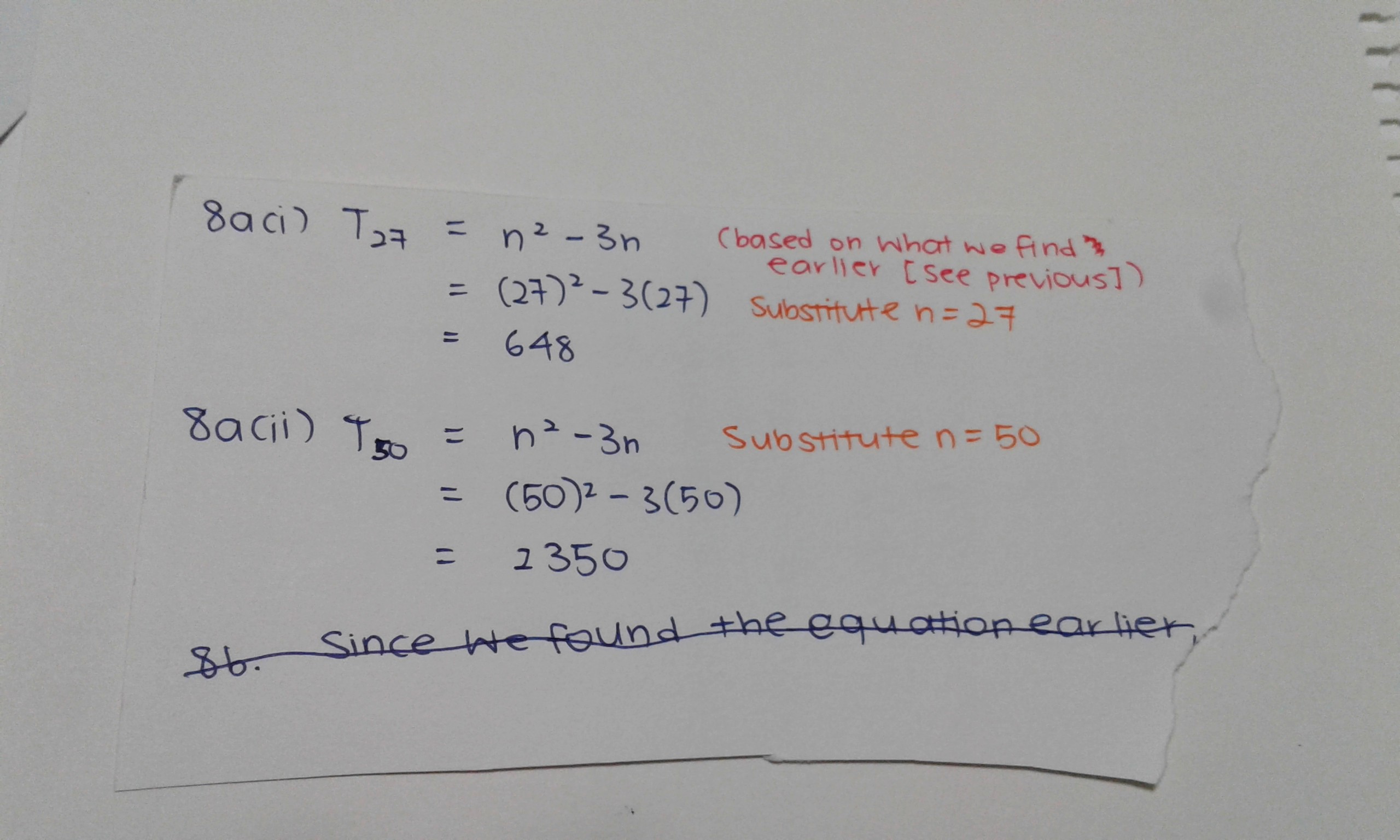Ask Singapore Homework?
Upload a photo of a Singapore homework and someone will email you the solution for free.

Question
secondary 3 | E Maths
3 Answers Below
Anyone can contribute an answer, even non-tutors.

Help
For example ,
1st term , T1 = 1(1 - 3) = 1 x -2 = -2
2nd term, T2 = 2(2 - 3) = 2 x -1 = -2
3rd term, T3, = 3(3 - 3) = 3 x 0 = 0
4th term, T4 = 4(3 - 4) = 4 x -1 = -4
T50 = 50(50 - 3) = 50 x 47 = 2350
Similarly, we make k² - 144 into the form of k² - 3k and equate it to the latter
k² - 144 = k² - 3(48)
k² - 3(48) = k² - 3k
Comparing coefficients,
k = 48
Since k² - 3k = k(k - 3),
k(k - 3) = 48(48 - 3) = 48 x 45 = 2160
So this term is the 48th term and T48 = 2160
Then again, the most intuitive one for this question would be 48 since the student would just manipulate the expression to look like n² - 3n
See 3 Answers

1, 1, 2, 4, 7, 11, 16, ...
For this number pattern, we realised that the first set of 'jumps' are not the same as it goes like this:
+0, +1, +2, +3, +4, +5, ...
However, we find that all the 'jumps' have the common thing - they are added by 1 (+1).
In short, a quadratic pattern is something like these two qns - first set of 'jumps' are inconsistent, second set of 'jumps' are consistent.








